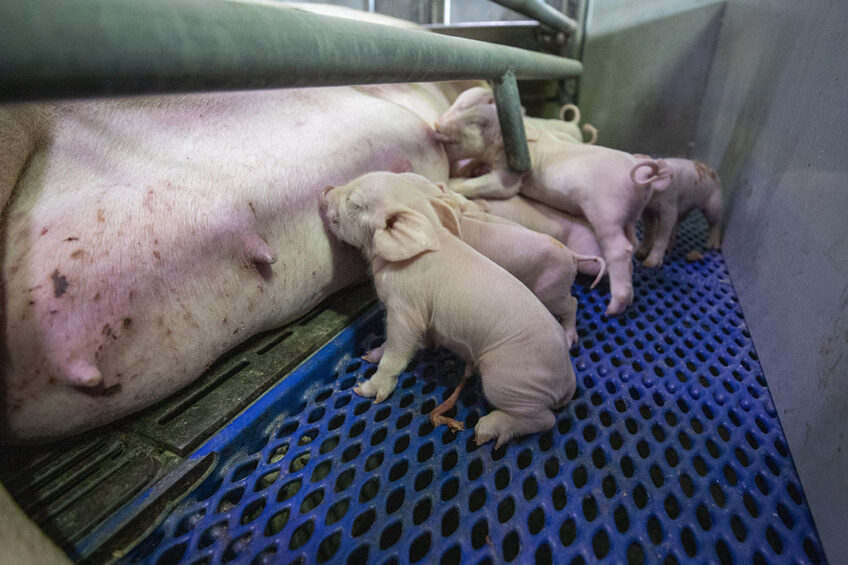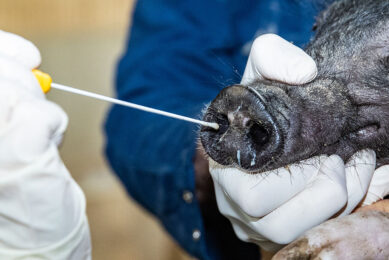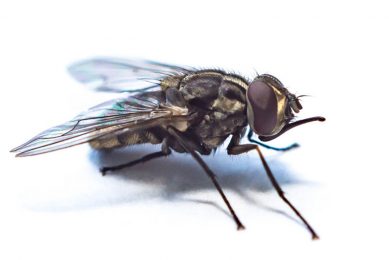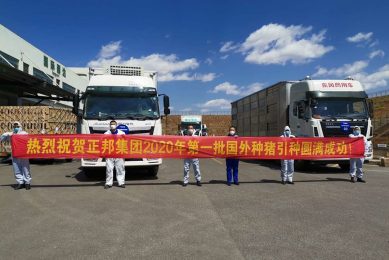What is mycoplasma-related lameness in pigs and how to treat it?

Lameness in pigs due to arthritis is caused by a group of overlapping infectious bacteria. Mycoplasma species include Mycoplasma hyorhinis and Mycoplasma hyosynoviae. They are frequently reported in different swine herds in association with lameness and arthritis among young breeding gilts and grow-finish pigs. What is Mycoplasma and how to treat and prevent ensuing lameness?
Lameness is a multifactorial condition affecting pig welfare and profitability. Arthritis is a recurrent cause of lameness in pigs inducing pain, extensive bone alterations, and mechanical impairment in limbs. Arthritic lameness restricts pig performance and has significant economic implications. These are due to premature culling of breeding sows, increased production cost, antibiotic treatments, extra time required for clinical surveillance, increased workload, and reduced reproductive performance.
What is Mycoplasma?
Mycoplasma species are frequent colonisers and opportunistic infectious agents in swine farms. Pigs in all phases of production are susceptible to colonisation. Sows are the main infectious reservoir. However, pre- and post-weaning piglets and grow-finish pigs are vulnerable as well.
Mycoplasma hyorhinis and hyosynoviae are inhabitants of the upper respiratory tract. They particularly inhabit the nasal cavity and tonsils of pigs. Mycoplasma hyorhinis is associated with polyserositis and polyarthritis in post-weaning and finishing pigs. Mycoplasma hyosynoviae causes non-purulent arthritis by invading the susceptible joints in growing pigs. In addition, it replicates in the upper respiratory tract of pigs and persists in the tonsils. Therefore, asymptomatic pigs may become life-long carriers. Environmental stressors such as temperature fluctuation, increased stocking density, and commingling of non-litter mates cause hyosynoviae-associated arthritis.
What are the clinical signs of Mycoplasma arthritis?
Clinical signs include hock joint swelling, acute lameness in one or more limbs, reluctancy to rise and walk, immobility, shivering, and slightly elevated temperature. Associated macroscopic lesions comprise of the presence of yellow to brown fluid in affected joints due to thickening and oedema of the synovial membrane. In the microscopic level, arthritis results in enlargement of synovial membrane cells, increased amount of blood in the vessels, and lymphocyte and macrophage invasion of the peripheral blood vessels.
Transmission of infection
Transmission of infection occurs through direct oronasal contact or indirectly from contaminated drinkers or aerosols and has taken place in many herds by 10-12 weeks of age. Mycoplasma survives in the environment for up to 4 weeks and spreads to uninfected farms by carrier pigs. Sows shed Mycoplasma in their oronasal secretions; however, piglets are not infected by the bacteria until they reach 4 weeks of age by direct oronasal contact. After bacteria inoculation, mycoplasma travels from the upper respiratory tract to the joints and causes arthritis.
Diagnosis
Mycoplasma-related lameness due to arthritis causes heat and swelling in the joints. In post-mortem examination yellow to brown synovial fluid containing fibrin in the joint cavity is observed indicating an arthritic infection. Joint fluid can be aspirated and examined for antibodies and the organism can be isolated. Final proof of Mycoplasma hyorhinis and Mycoplasma hyosynoviae infection is based on bacteria culture test from tonsil tissue and synovial fluids, oral fluids and nasal swab testing by real-time PCR, and serum testing by ELISA in corresponding laboratories.
Prevention, control, and treatment
Mycoplasma hyosynoviae is a recurrent issue in breeding gilts mostly within the first 6 to 10 weeks after introduction to the farm; thus, it is important to implement strategic preventative measures. During this susceptible period, pigs need to be on ad lib feeding with in-feed medication such as oxytetracycline, chlortetracycline, and lincomycin. In addition, proper quality of housing, optimal environmental temperature, appropriate bedding, avoiding mixing and fighting, and controlling enzootic pneumonia and other respiratory diseases reduce the risk of mycoplasma-related lameness. Currently there is no vaccine available for Mycoplasma-related lameness and treatment is most effective if given early. Antibiotic administration such as lincomycin or tiamulin is an available treatment for pigs.
Concluding remarks
Lameness, a deviation from the normal gait pattern, is a multifactorial condition causing pain and discomfort in pigs. Mycoplasma is an opportunistic infectious agent which transmits from carrier pigs though oronasal contact, then travels from the upper respiratory tract to the joints causing arthritis and lameness.
The definitive diagnosis requires isolating the causative agents from joint, oral, or nasal fluids. Although there is no vaccine available yet, implementing strategic preventative measures within the first 6 to 10 weeks after introduction to the farm is essential.










